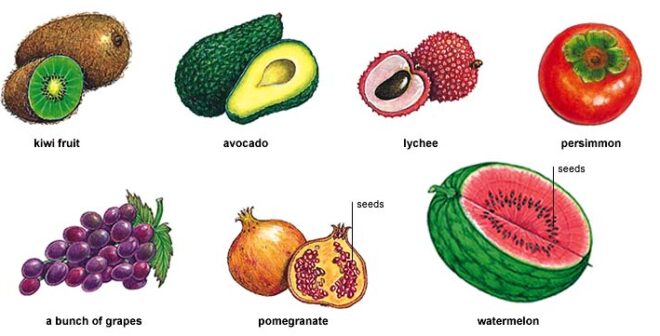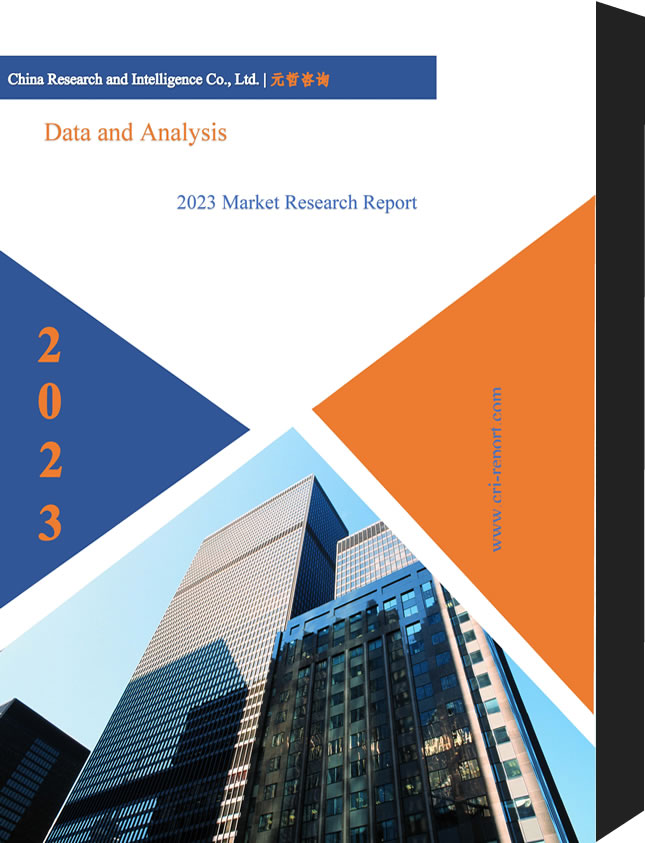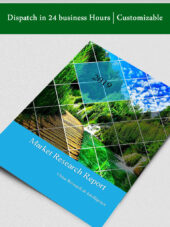Description
Southeast Asia Fruit Industry
Affected by climate and soil conditions, the Southeast Asian region is the world’s leading tropical fruit producing area, abounding in fruits such as durian, mango, banana, pineapple and mangosteen. In Vietnam, for example, fruits are included by the Ministry of Agriculture and Rural Development as one of the ten key export agricultural products. Vietnam’s annual fruit production is about 10 million tons, which are listed and sold in more than 60 countries and regions around the world, and areactively developing new export markets.

Southeast Asia is also one of the most economically active regions in the world, with rapid economic development, improved living standards, gradually changing dietary habits and structure, and increasingly diversified demand for fruit, driving the development of the fruit industry in Southeast Asia.
Southeast Asia in this report includes 10 countries: Singapore, Thailand, Philippines, Malaysia, Indonesia, Vietnam, Myanmar, Brunei, Laos and Cambodia. With a total population of over 600 million by the end of 2021, Southeast Asia has an overall economic growth rate higher than the global average and is one of the key drivers of future global economic growth.
According to CRI’s analysis, the economic levels of the 10 Southeast Asian countries vary greatly, with Singapore being the only developed country with a per capita GDP of about US$73,000 in 2021. While Myanmar and Cambodia will have a GDP per capita of less than US$2,000 in 2021. The population and minimum wage levels of each country also vary greatly. Brunei, which has the smallest population, will have a total population of less than 500,000 people in 2021, while Indonesia, which has the largest population, will have a population of about 275 million people in 2021.
CRI expects the fruit industry in Southeast Asia to maintain growth from 2023-2032. On the one hand, Southeast Asia is a major global fruit exporter, and the growth of global demand for fruit has contributed to the expansion of its fruit production and export scale. On the other hand, with the population growth and economic development in Southeast Asia, the domestic fruit consumption demand increases, which promotes the development of Southeast Asian fruit industry.
Topics covered:
- Southeast Asia Fruit Industry Status and Major Sources in 2018-2022
- What is the Impact of COVID-19 on Southeast Asia Fruit Industry?
- Which Companies are the Major Players in Southeast Asia Fruit Industry Market and What are their Competitive Benchmarks?
- Key Drivers and Market Opportunities in Southeast Asia Fruit Industry
- What are the Key Drivers, Challenges, and Opportunities for Southeast Asia Fruit Industry during 2023-2032?
- What is the Expected Revenue of Southeast Asia Fruit Industry during 2023-2032?
- What are the Strategies Adopted by the Key Players in the Market to Increase Their Market Share in the Industry?
- What are the Competitive Advantages of the Major Players in Southeast Asia Fruit Industry Market?
- Which Segment of Southeast Asia Fruit Industry is Expected to Dominate the Market in 2032?
- What are the Major Adverse Factors Facing Southeast Asia Fruit Industry?
Table of Contents
1 Analysis of the Fruit Industry in Singapore
1.1 Singapore’s Fruit Industry Development Environment
1.1.1 Geography
1.1.2 Population
1.1.3 Economy
1.1.4 Minimum Wage in Singapore
1.2 Singapore Fruit Industry Operation Status 2018-2022
1.2.1 Production Status of Fruit Industry in Singapore
1.2.2 Singapore Fruit Industry Sales Status
1.2.3 Singapore Fruit Industry Import and Export Status
1.3 Analysis of Major Fruit Production and Trading Enterprises in Singapore
2 Analysis of Thailand Fruit Industry
2.1 Development Environment of Thailand Fruit Industry
2.1.1 Geography
2.1.2 Population
2.1.3 Economy
2.1.4 Minimum Wage in Thailand
2.2 Thailand Fruit Industry Operation Status 2018-2022
2.2.1 Thailand Fruit Industry Production Status
2.2.2 Thailand Fruit Industry Sales Status
2.2.3 Thailand Fruit Industry Import and Export Status
2.3 Major Fruit Production and Trading Companies in Thailand
3 Analysis of the Philippine fruit industry
3.1 Development Environment of the Philippine Fruit Industry
3.1.1 Geography
3.1.2 Population
3.1.3 Economy
3.1.4 Minimum Wage in the Philippines
3.2 Operation of the Fruit Industry in the Philippines 2018-2022
3.2.1 Production Status of the Fruit Industry in the Philippines
3.2.2 Sales Status of Philippine Fruit Industry
3.2.3 Import and Export Status of Philippine Fruit Industry
3.3 Major Fruit Production and Trading Companies in Philippines
4 Malaysia Fruit Industry Analysis
4.1 Malaysia Fruit Industry Development Environment
4.1.1 Geography
4.1.2 Population
4.1.3 Economy
4.1.4 Minimum Wage in Malaysia
4.2 Malaysia Fruit Industry Operation Status 2018-2022
4.2.1 Malaysia Fruit Industry Production Status
4.2.2 Malaysia Fruit Industry Sales Status
4.2.3 Malaysia Fruit Industry Import and Export Status
4.3 Major Fruit Production and Trading Enterprises in Malaysia
5 Indonesia Fruit Industry Analysis
5.1 Development Environment of Indonesia Fruit Industry
5.1.1 Geography
5.1.2 Population
5.1.3 Economy
5.1.4 Minimum Wage in Indonesia
5.2 Indonesia Fruit Industry Operation Status 2018-2022
5.2.1 Indonesia Fruit Industry Production Status
5.2.2 Indonesia Fruit Industry Sales Status
5.2.3 Indonesia Fruit Industry Import and Export Status
5.3 Major Fruit Production and Trading Companies in Indonesia
6 Vietnam Fruit Industry Analysis
6.1 Development Environment of Vietnam Fruit Industry
6.1.1 Geography
6.1.2 Population
6.1.3 Economy
6.1.4 Minimum Wage in Vietnam
6.2 Operation of Vietnam Fruit Industry 2018-2022
6.2.1 Vietnam Fruit Industry Production Status
6.2.2 Vietnam Fruit Industry Sales Status
6.2.3 Import and Export Status of Vietnam Fruit Industry
6.3 Major Fruit Production and Trading Enterprises in Vietnam
7 Analysis of Myanmar Fruit Industry
7.1 Development Environment of Myanmar Fruit Industry
7.1.1 Geography
7.1.2 Population
7.1.3 Economy
7.1.4 Myanmar Minimum Wage
7.2 Myanmar Fruit Industry Operation Status 2018-2022
7.2.1 Myanmar Fruit Industry Production Status
7.2.2 Sales Status of Myanmar Fruit Industry
7.2.3 Import and Export Status of Myanmar Fruit Industry
7.3 Major Fruit Production and Trading Enterprises in Myanmar
8 Brunei Fruit Industry Analysis
8.1 Brunei Fruit Industry Development Environment
8.1.1 Geography
8.1.2 Population
8.1.3 Economy
8.1.4 Brunei Minimum Wage
8.2 Brunei Fruit Industry Operation 2018-2022
8.2.1 Brunei Fruit Industry Production Status
8.2.2 Brunei Fruit Industry Sales Status
8.2.3 Import and Export Status of Brunei Fruit Industry
8.3 Brunei Major Fruit Production and Trading Enterprises
9 Laos Fruit Industry Analysis
9.1 Development Environment of Laos Fruit Industry
9.1.1 Geography
9.1.2 Population
9.1.3 Economy
9.1.4 Minimum Wage in Laos
9.2 Lao Fruit Industry Operation Status 2018-2022
9.2.1 Production Status of the Lao Fruit Industry
9.2.2 Laos Fruit Industry Sales Status
9.2.3 Import and Export Status of Lao Fruit Industry
9.3 Major Fruit Production and Trading Enterprises in Laos
10 Cambodia Fruit Industry Analysis
10.1 Development Environment of Cambodia Fruit Industry
10.1.1 Geography
10.1.2 Population
10.1.3 Economy
10.1.4 Minimum Wage in Cambodia
10.2 Cambodia Fruit Industry Operation Status 2018-2022
10.2.1 Cambodia Fruit Industry Production Status
10.2.2 Cambodia Fruit Industry Sales Status
10.2.3 Cambodia Fruit Industry Import and Export Status
10.3 Major Fruit Producers and Traders in Cambodia
11 Southeast Asia Fruit Industry Outlook 2023-2032
11.1 Analysis of Factors Affecting the Development of Southeast Asian Fruit Industry
11.1.1 Favorable Factors
11.1.2 Unfavorable Factors
11.2 Supply Forecast of Southeast Asian Fruits Industry 2023-2032
11.3 Southeast Asia Fruits Industry Manufacturing Market Demand Forecast 2023-2032
11.4 Impact of COVID -19 Epidemic on Fruit Industry




Reviews
There are no reviews yet.